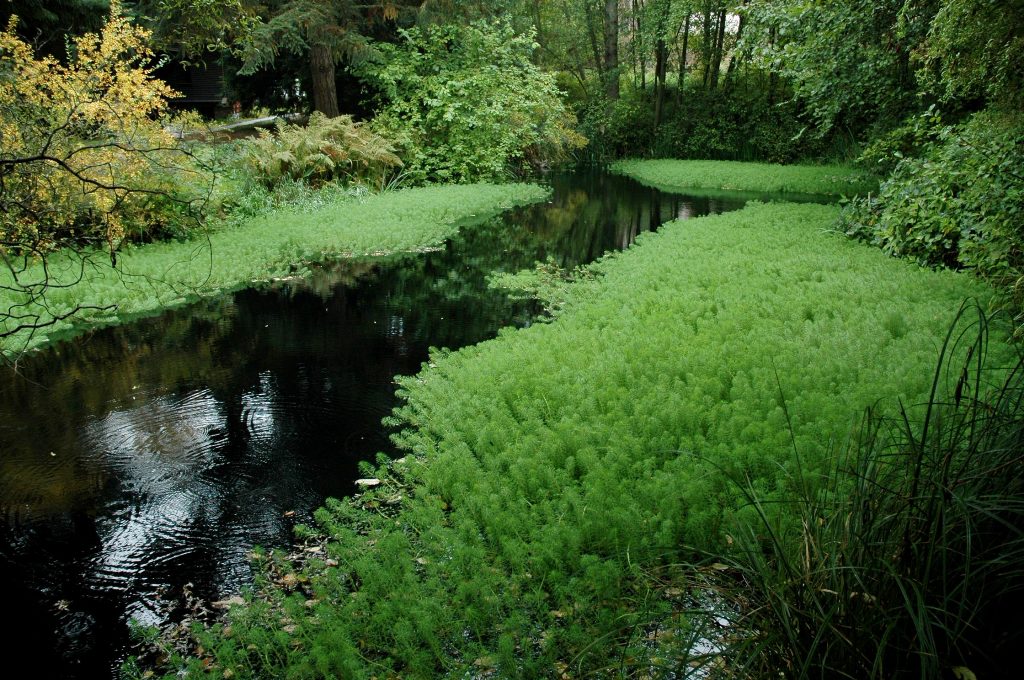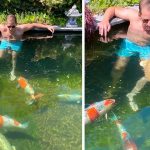Parrot feathers, also known as Myriophyllum aquaticum, are invasive aquatic plants that can quickly take over your pond, causing issues with water flow, oxygen levels, and overall pond health. Removing parrot feathers from your pond is essential to maintain a balanced ecosystem and prevent them from spreading to other water bodies. Here are some effective methods to help you get rid of parrot feathers in your pond:
Credit: www.koiphen.com
1. Manual Removal
One of the simplest ways to control parrot feathers in your pond is through manual removal. Using a rake or a pond skimmer, gently pull out the parrot feathers from the water. Be sure to remove as much of the plant as possible, including the roots, to prevent regrowth. Regularly monitoring and removing parrot feathers by hand can help keep their growth in check.
2. Biological Control
Introducing natural predators or competitors to the pond can help control the growth of parrot feathers. Fish species like grass carp or koi are known to feed on aquatic plants and can help keep the parrot feather population under control. Additionally, certain species of snails and insects can also be introduced to the pond to consume parrot feathers and limit their growth.
3. Herbicides
Herbicides can be an effective way to eliminate parrot feathers from your pond, but caution must be exercised when using them. It is important to choose an herbicide that is safe for aquatic life and will not harm other plants or animals in the pond. Follow the instructions carefully and apply the herbicide as directed to ensure the best results while minimizing environmental impact.
4. Barrier Methods
Installing physical barriers such as pond netting or a bottom barrier can help prevent parrot feathers from spreading throughout the pond. These barriers can block sunlight and nutrients from reaching the plants, limiting their growth and spread. Regularly inspect and maintain the barriers to ensure they are effectively preventing the parrot feathers from taking over the pond.
5. Mechanical Control
Using mechanical devices like pond aerators or water circulators can help disrupt the growth of parrot feathers by creating water movement and preventing stagnant areas where the plants can thrive. By improving water circulation and oxygen levels, mechanical control methods can inhibit the growth of parrot feathers and promote a healthier pond ecosystem.
6. Preventative Measures
Preventing the introduction of parrot feathers to your pond in the first place is key to avoiding the need for removal methods. When adding new plants or fish to your pond, thoroughly inspect them to ensure they are free of parrot feathers or other invasive species. Properly quarantine new additions before introducing them to the pond to prevent the spread of unwanted plants.
7. Regular Maintenance
Maintaining a regular pond maintenance schedule is crucial for preventing the growth of parrot feathers and other invasive plants. Regularly remove debris, excess nutrients, and algae from the pond to create an environment that is less hospitable to parrot feathers. By staying on top of pond maintenance, you can help prevent the need for more aggressive removal methods in the future.

Credit: kingcounty.gov
Conclusion
Parrot feathers can quickly take over a pond if left unchecked, leading to issues with water quality and ecosystem balance. By utilizing a combination of manual removal, biological control, herbicides, barrier methods, mechanical control, preventative measures, and regular maintenance, you can effectively manage and control parrot feathers in your pond. Remember to always consider the environmental impact of any removal method and choose the most suitable option for your specific pond conditions.




